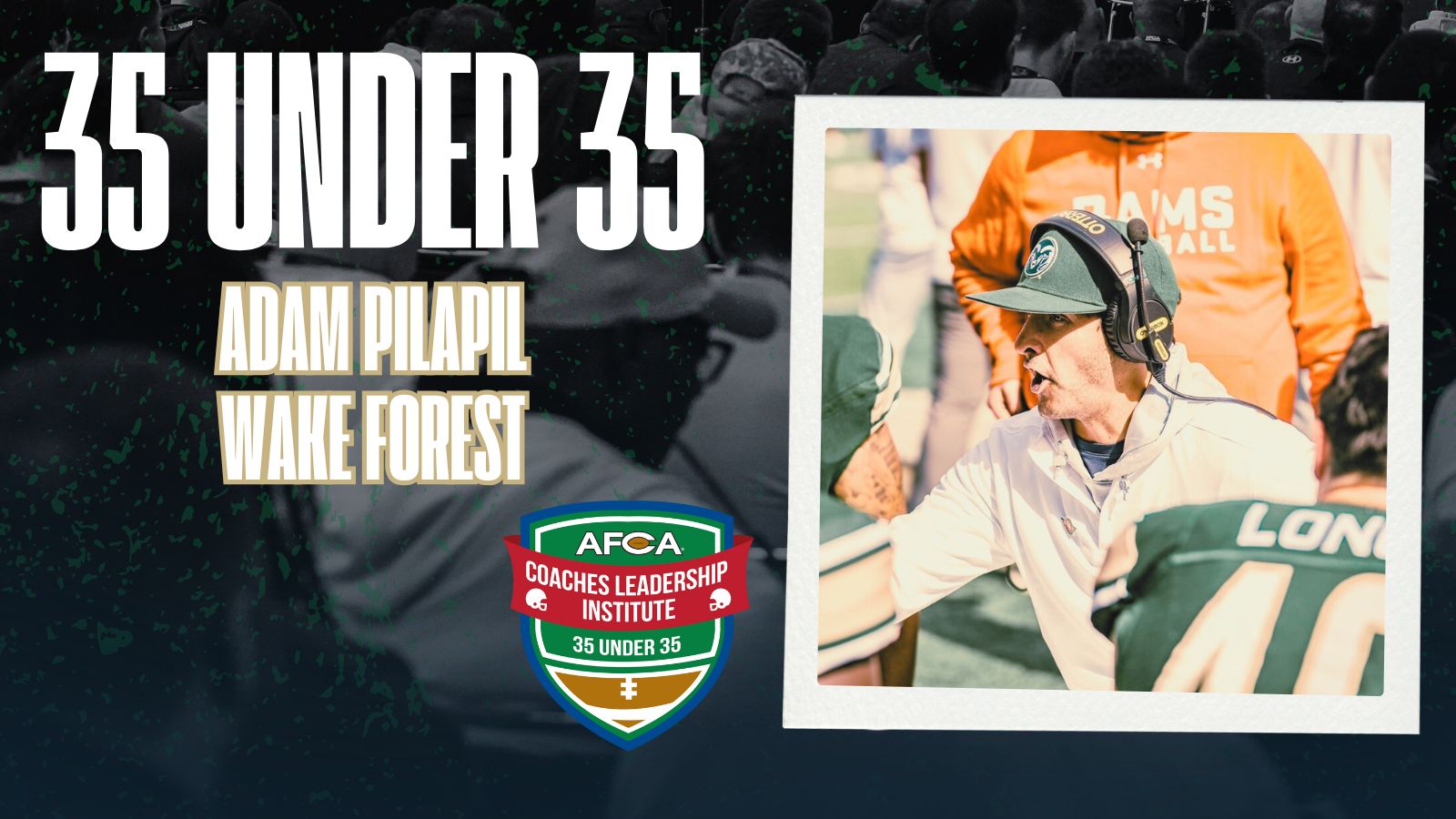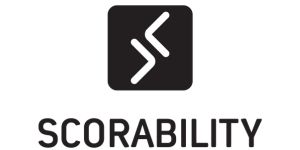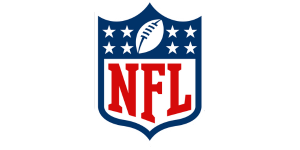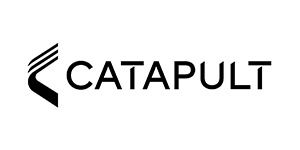
35 Under 35 Presents | Adam Pilapil, Wake Forest | Tackling
April 25, 2025
Adam Pilapil is the Linebackers coach at Wake Forest University and will begin his first season with the program in 2025. Before joining Wake Forest, he spent three seasons coaching linebackers at Colorado State and has held positions at Montana State, Kansas State, and Wyoming, where he also played linebacker.
In this article, Coach Pilapil shares his approach to teaching tackling, focusing on toughness, technique, and consistent effort. He breaks down the tackling process, highlights key drills, and explains strategies for different game situations.
Tackling Fundamentals
Tackling is a skill that combines toughness and technique, according to Coach Pilapil. While physicality is important, he emphasizes that athletes can learn to tackle effectively through proper training.
Key principles include:
-
Recruiting athletes who demonstrate physicality and a willingness to engage in contact.
-
Teaching a structured tackling system that builds confidence and reduces fear of mistakes.
-
Creating a team culture that encourages relentless effort and a commitment to improvement.
Tackling Philosophy
Pilapil emphasizes the importance of leverage and proper form, often utilizing the Leverage Shoulder Tackle (also called Hawk Tackling):
-
Near foot, near shoulder: Aligning the body for maximum impact while maintaining control.
-
Leverage: Forcing the ball carrier toward help and trusting angles to accelerate through contact.
-
Eyes up, helmet-free contact: Keeping the head out of the tackle for safety and better control.
Tackling Process
Pilapil simplifies tackling into three key steps:
-
Sprint: Close ground quickly while maintaining leverage on the ball carrier.
-
Come to Balance: Shorten your stride, set a strong base, and prepare for contact.
-
Strike: Use the facemask as a guide to the strike point, jab the shoulder, and finish with a wrap, squeeze, and drive.
Tackling Strategies
Coach Pilapil prepares his players for a variety of tackling situations, focusing on the following techniques:
-
Profile Tackles: Situations like zero-step, one-step, bag, and donut tackles.
-
Leverage Tackles: Tackling from an angle, using tracking to control the ball carrier.
-
Gator Roll: A technique for chase-down tackles or when the ball carrier doesn’t go down immediately.
-
Stiff Arm Destructs: Neutralizing the ball carrier’s stiff-arm by knocking it away and running through.
Watch the Video
To see these techniques in action, watch the video below. Coach Pilapil demonstrates his tackling philosophy and drills using practice and game film.
For more information about the AFCA, visit www.AFCA.com. For more interesting articles, check out The Insider and subscribe to our weekly email.
If you are interested in more in-depth articles and videos, please become an AFCA member. You can find out more information about membership and specific member benefits on the AFCA Membership Overview page. If you are ready to join, please fill out the AFCA Membership Application.
« « Previous PostNext Post » »
Adam Pilapil is the Linebackers coach at Wake Forest University and will begin his first season with the program in 2025. Before joining Wake Forest, he spent three seasons coaching linebackers at Colorado State and has held positions at Montana State, Kansas State, and Wyoming, where he also played linebacker.
In this article, Coach Pilapil shares his approach to teaching tackling, focusing on toughness, technique, and consistent effort. He breaks down the tackling process, highlights key drills, and explains strategies for different game situations.
Tackling Fundamentals
Tackling is a skill that combines toughness and technique, according to Coach Pilapil. While physicality is important, he emphasizes that athletes can learn to tackle effectively through proper training.
Key principles include:
-
Recruiting athletes who demonstrate physicality and a willingness to engage in contact.
-
Teaching a structured tackling system that builds confidence and reduces fear of mistakes.
-
Creating a team culture that encourages relentless effort and a commitment to improvement.
Tackling Philosophy
Pilapil emphasizes the importance of leverage and proper form, often utilizing the Leverage Shoulder Tackle (also called Hawk Tackling):
-
Near foot, near shoulder: Aligning the body for maximum impact while maintaining control.
-
Leverage: Forcing the ball carrier toward help and trusting angles to accelerate through contact.
-
Eyes up, helmet-free contact: Keeping the head out of the tackle for safety and better control.
Tackling Process
Pilapil simplifies tackling into three key steps:
-
Sprint: Close ground quickly while maintaining leverage on the ball carrier.
-
Come to Balance: Shorten your stride, set a strong base, and prepare for contact.
-
Strike: Use the facemask as a guide to the strike point, jab the shoulder, and finish with a wrap, squeeze, and drive.
Tackling Strategies
Coach Pilapil prepares his players for a variety of tackling situations, focusing on the following techniques:
-
Profile Tackles: Situations like zero-step, one-step, bag, and donut tackles.
-
Leverage Tackles: Tackling from an angle, using tracking to control the ball carrier.
-
Gator Roll: A technique for chase-down tackles or when the ball carrier doesn’t go down immediately.
-
Stiff Arm Destructs: Neutralizing the ball carrier’s stiff-arm by knocking it away and running through.
Watch the Video
To see these techniques in action, watch the video below. Coach Pilapil demonstrates his tackling philosophy and drills using practice and game film.
For more information about the AFCA, visit www.AFCA.com. For more interesting articles, check out The Insider and subscribe to our weekly email.
If you are interested in more in-depth articles and videos, please become an AFCA member. You can find out more information about membership and specific member benefits on the AFCA Membership Overview page. If you are ready to join, please fill out the AFCA Membership Application.














